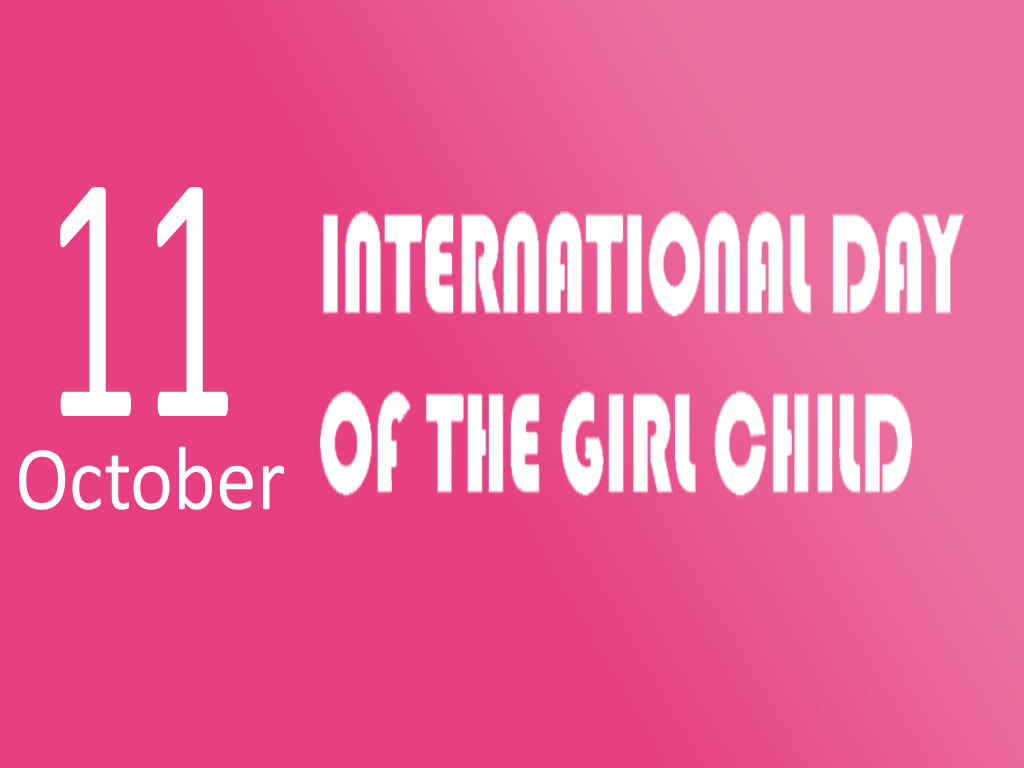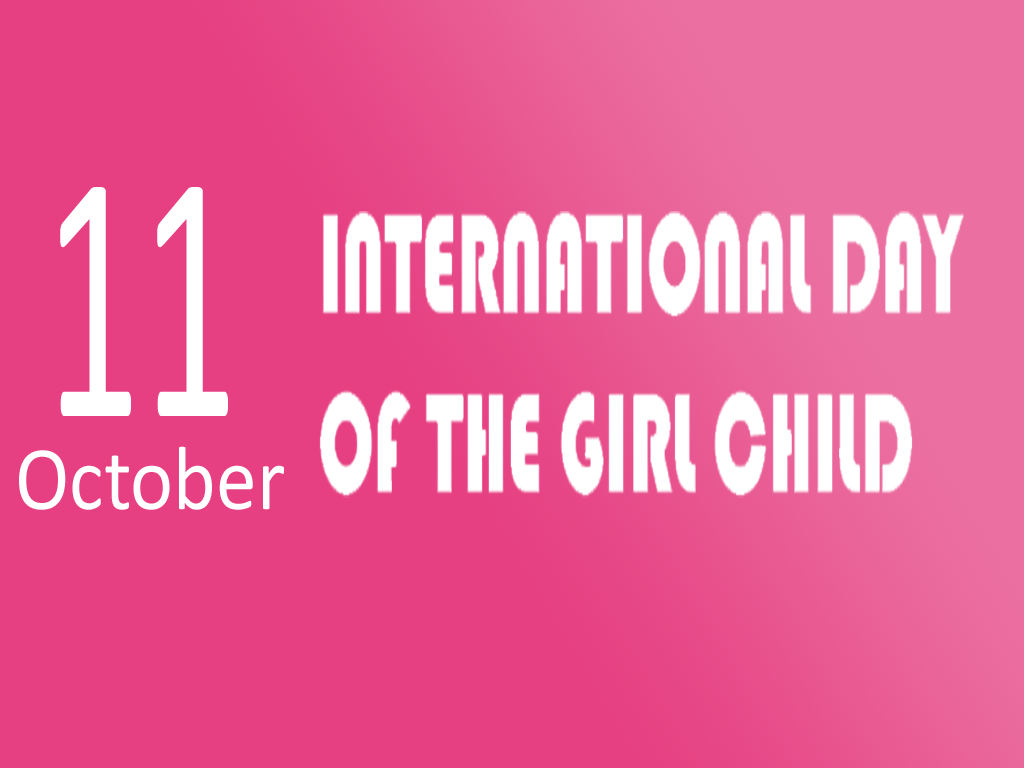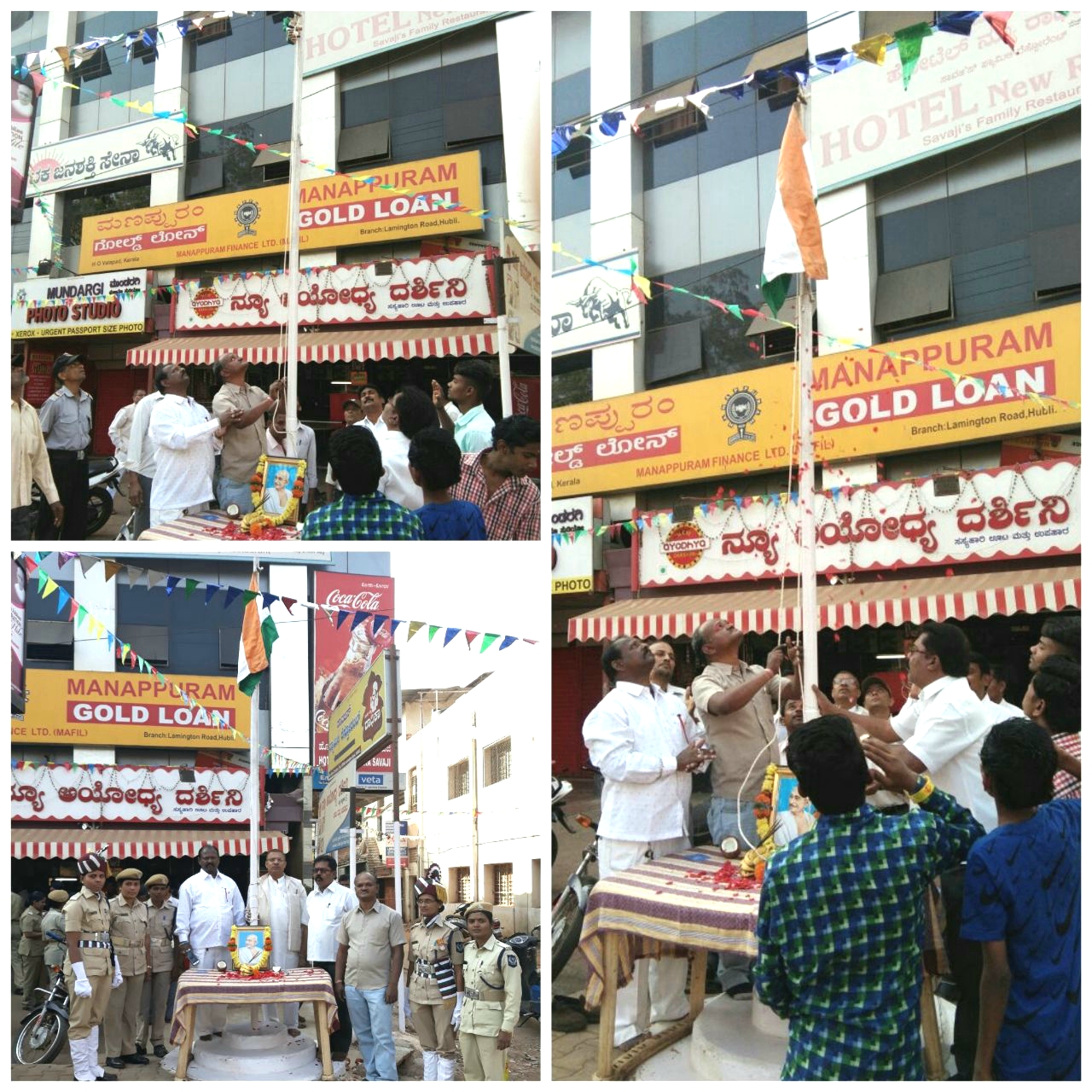
Ranchi, Jharkhand | October | Wednesday | 11, 2017 :: International Day of the Girl Child Day observed on 11 October every year. The theme this year is “EmPOWER girls: Emergency response and resilience planning”.
When girls’ lives are disrupted by climate change, disaster and protracted conflict – events that can uproot them from their homes – there are risks, violations and vulnerabilities they face just because they are girls. Most of these dangers are directly linked to the economic, political, social and cultural disadvantages girls deal with in their daily lives.
For example, in times of crisis, girls often have fewer resources, less mobility, and more difficulty access life-saving information and networks. Violence, including sexual, school-related gender-based violence, child marriage – basic human rights and protection issues – can become more acute in the wake of disaster.
However, girls are also resilient. Long-term solutions designed with and for girls can strengthen this resilience and be a pathway of transformational and lifelong opportunity for girls. Girls, especially adolescent girls, need platforms to voice the challenges they face in everyday life and explore the solutions that work for them so they can build better futures for themselves and their communities.
Empowering girls requires focused investment and collaboration between emergency preparedness, emergency response and development sectors. Providing girls with the services and safety, education, skills and resilience they need in daily life can reduce the risks they face when a conflict or disaster strikes.
Situation in Jharkhand
Jharkhand has 72 lakhs girl younger than 18 years. They are the future of a vibrant society and a stronger demographic dividend for the state. Yet the ambition for gender equality in the Sustainable Development Goals highlights the existence of disadvantage and discrimination borne by girls everywhere on a daily basis.
Dr. Madhulika Jonathan, Chief of UNICEF Jharkhand says, “It is important to note that female work force participation in rural Jharkhand is significantly low at 19.8%. This is significant for Jharkhand as an economy. Jharkhand State should hence invest in adolescent girls to enable them to delay marriage until 20 years. This will have far reaching results both in terms of improved economic productivity, increased household income and will help tackle and address intergenerational poverty.”
Issues affecting girls younger than 18 years:
Jharkhand has a declining child sex ratio with 919 girls against per 1000 boys, one in every three girl is married before 18 years of age (census 2011), Age specific attendance ratio is lower for girl child (90:76, NSSO 2014), more than half of the girls are anaemic 67 % (NFHS 3), Infant mortality rate for the girl child is 31 as against 27 for boys (SRS 2016), stunting is higher for girl child 49.9 as against 44.7 for boys (RSOC 2013-14).
Jharkhand has the third highest rate of child marriage in the country after West Bengal (40%) and Bihar (39%). Married women of 20-24 years married before 18 years (which is the standard indicator to measure of child marriage) is 38% in Jharkhand, compared to 26.8% at the national level (NFHS 4).In Jharkhand, child marriage rate is highest in Godda district. 63.5% of married women of 20-24 years were married before 18 years in Godda, compared to the State average of 38%. Figures from other districts are Garhwa (58.8%), Deoghar (52.7%), Giridih (52.6%), Koderma (50.8%), Chatra (49%), Dumka (47.4%), Pakur (41.1%), Hazaribagh (40.8%), Palamu (40.5%), Sahibganj (38.4%) and Bokaro (30.6%) (NFHS 4). Child marriage was lowest in Simdega (14.7%) followed by PashchimiSinghbhum (21.3%), Gumla (24%), Ranchi (28.1%), Lohardaga (28.5%) and Dhanbad (29.9%) (NFHS 4).
Target 5.3 of the SDGs commits governments to “eliminate all harmful practices, such as child, early and forced marriage and female genital mutilations” by 2030. At the UN General Assembly on 25 September 2015, all UN Member States pledged their public support towards achieving target 5.3 to end child marriage as part of the wider SDGs.
As SDG implementation gets underway, including the development and rollout of indicators to track progress at global, regional and national levels, there is a critical unfinished agenda on ensuring availability and use of high-quality, timely and reliable data on girls’ progress, including for those living in poverty or with a disability.
Progress of girls, Progress for all
- An extra year of primary school for girls can increase their eventual adult wages by 10 to 20 per cent, and an extra year of secondary school increases them by 15 to 25 per cent.
- If all girls completed secondary education, under-five child mortality could be cut in half.
- Studies from India show that delaying adolescent pregnancies could have increased national economic productivity by US$7.7 billion dollars (51590 crores).
Action for advance progress of girls
- Families and communities need to know about theharms caused by child marriage; key provisions of the Prohibition of Child Marriage Act 2006 (PCMA) and they should remain alert about the child marriage in their village/community/area and try and prevent it. In the case of child marriage, should immediately inform to BDO of concerned block or call on 1098.
- Narrow the gender gaps by enhancing effectiveness of girl child schemes like the Mukhya Mantri Ladli Laxmi Yojana;
- Provide schemes to incentivize girls to remain unmarried until they attain legal age of marriage and promote their education or skill development.
- Ensuring participation of women in standing committees of Gram Sabha, incorporating women’s’ issues in Gram Panchayat Development plan thereby, improving access to education, health and nutrition sanitation and safe spaces for girls.
- Enhance capacity of governments departments and institutions to collect, analyze and disseminate gender data across the age spectrum to improve statistics on gender-based violence, adolescent pregnancy and reproductive health, informal employment, entrepreneurship, unpaid work, and other priorities for girls and young women.
- Disaggregate data on boys and girls and along other dimensions (e.g., ethnicity, age, income-level, disability, location, migration status, etc.) for better understanding that which children and adolescents are most disadvantaged and where.
- Provide support to girls in hard to reach areas to enable them complete secondary and higher education. Make provisions for increasing access to vocational training.
- Create policy and development dialogue around the gender to build consensus for coherent and convergent action
Data – India & Jharkhand
| Indicators | Jharkhand | India | Data Source |
| Population girls below 18 years
Population boys below 18 years |
70.3 lakh
75.6 lakh |
Census, 2011
|
|
| Population of boys of 0-6 years
Population of girls of 0-6 years |
26.2 lakh
27.6 lakh |
Census, 2011 | |
| Child Sex ratio (0-6 years)-girls per 1000 boys | 919 | 919 | NFHS-4,2015-16 |
| Female Literacy Rate
Male Literacy Rate Total Literacy Rate |
59
79.7 66.41 |
68.4
85.6 73.0 |
NFHS-4,2015-16
NFHS-4,2015-16 Census, 2011 |
| Education | |||
| Elementary Education (Enrolment)
(No of girls per 1000 boys) |
974 | NA | DISE, 2015-16 |
| Average Annual dropout rate at primary level
Boys Girls |
5.91 5.03 |
NA |
DISE, 2015-16 |
| Transition rate
Boys Girls |
80.76 77.66 |
NA |
DISE, 2015-16 |
| Retention rate at Elementary level
Boys Girls |
46.06 47.79 |
NA |
DISE, 2015-16 |
| Women with 10 or more years of schooling (%) | 28.7 | 35.7 | NFHS 4,2015-16 |
| Child Protection | |||
| Child Worker (5-14 years) (%)
Boys Girls |
4.9 4.8 |
Census, 2011
|
|
| Children aged below 5 years whose birth is registered (%)
Male Female |
35.8 33.9 |
71.3 72.7 |
RSOC,2013-14 |
| Mean age at marriage(yrs)
Female Male |
19.8 23.4 |
21.1 25.0 |
RSOC,2013-14 |
| Women aged 20-24 married before age 18(%) | 38 | 24.8 | NFHS 4,2015-16 |
| Men (25-29 years) married by age 21 (%) | 30.2 | 20.4 | NFHS- 4,2015-16 |
| Adolescent Girls (10-19 years) (%)
Adolescent girls ever married (age 10-19) Adolescent girls ever married (age 10-14) Adolescent girls ever married (age 15-19)
|
7.3 0.2 17.0 |
6.4 0.3 12.8 |
RSOC,2013-14 |
| Health | |||
| Infant Mortality rate (IMR) (Per 1000 live births)
Boys Girls Total |
27 31 29 |
33 36 34
|
SRS-2016 |
| Under 5 Mortality rate (U5MR) (Per 1000 live births)
Boys Girls Total |
40 48 44 |
42 49 45 |
SRS-2014 |
| Neo-natal Mortality Rate(Per 1000 live births) | 25 | 26 | SRS-2014 |
| Maternal Mortality Ratio (MMR)(Per 100,000 live births) | 208 | 167 | SRS-2013 |
| Women (15-19 years),who were already mothers or pregnant at the time of the survey | 12 | 7.9 | NFHS- 4,2015-16 |
| Nutrition | |||
| ((%) of children aged 0-59 months) | |||
| Stunted (Height for age below-2SD)(%)
Boys Girls |
44.7
49.9 |
39.5
37.8 |
RSOC, 2013-14 |
| Severely Stunted (Height for age below-3SD)(%)
Boys Girls Total |
NA NA 23.7 |
17.6 16.9 17.3 |
RSOC, 2013-14 |
| Wasted (Weight for height below -2SD)(%)
Boys Girls Total |
NA NA 15.6 |
15.6 14.5 15.1 |
RSOC, 2013-14 |
| Severely Wasted (Weight for height below -3SD)(%)
Boys Girls Total |
NA NA 3.7 |
4.8 4.4 4.6 |
RSOC, 2013-14 |
| Underweight (Weight for age below -2SD)(%)
Boys Girls Total |
NA NA 42.1 |
30.0 28.7 29.4 |
RSOC, 2013-14 |
| Severely Underweight (Weight for age below -2SD)(%)
Boys Girls Total |
NA NA 16.1 |
10.0 8.9 9.4 |
RSOC, 2013-14 |
| Children aged 0-23months breastfed Immediately/within an hour of birth (%)
Boys Girls |
33.4 31.9 |
43.8 45.4 |
RSOC, 2013-14 |
| Children aged 0-5 months who were exclusively breastfed
Boys(%) Girls |
62.9 66.1 |
65.0 64.8 |
RSOC, 2013-14 |
| Children aged 6-8 months who were fed complementary foods
Boys(%) Girls |
61.3 44.2 |
52.9 47.8 |
RSOC, 2013-14 |
| Anaemia among women of 15-49 years (%)
Anaemia among adolescent girls of 15-19 years(%) |
65.2
67.2 |
53
55.8 |
NFHS-4 (2015-16)
NFHS-3 (2005-06) |
| Women whose Body Mass Index (BMI) is below normal (BMI<18.5kg/m2)(%) | 31.5 | 22.9 | NFHS-4 (2015-16)
|
| WASH | |||
| Using improved sanitation facility (%) Male |
|||
Female
Total
14.7
17.1
15.0
NA
NA
41.8
RSOC,2013-14



